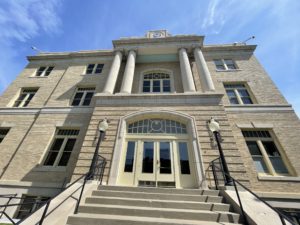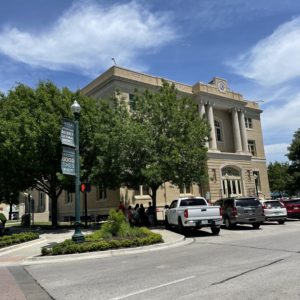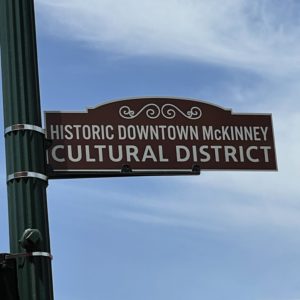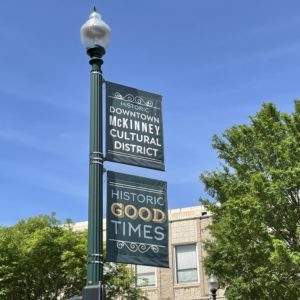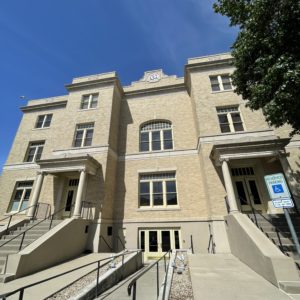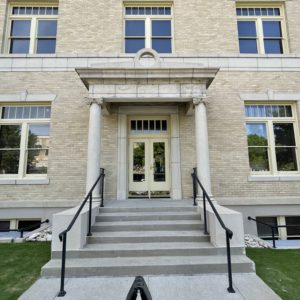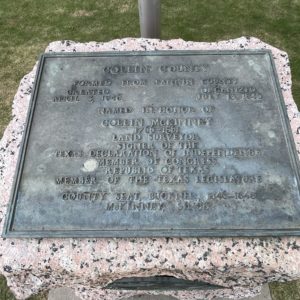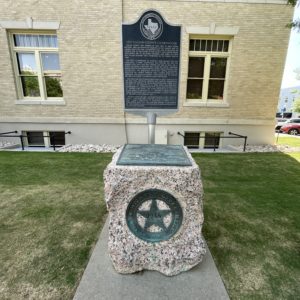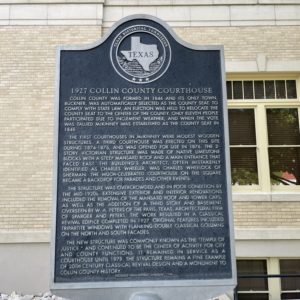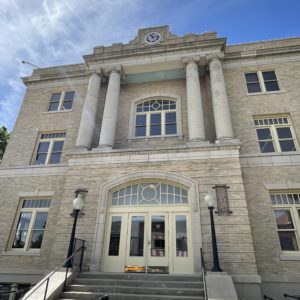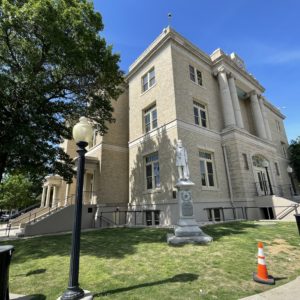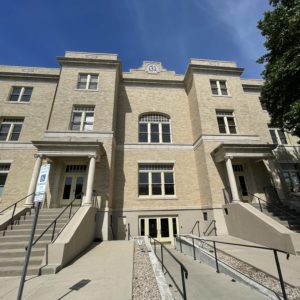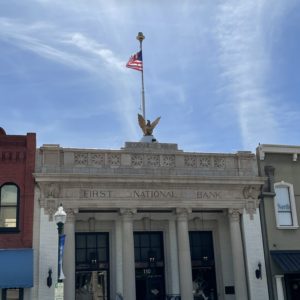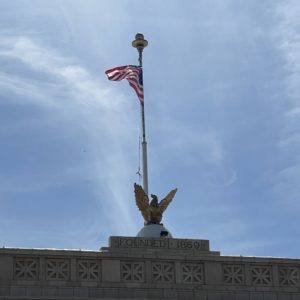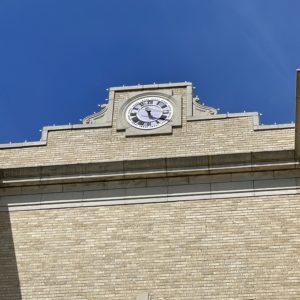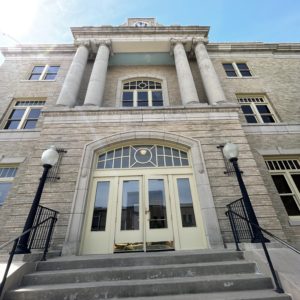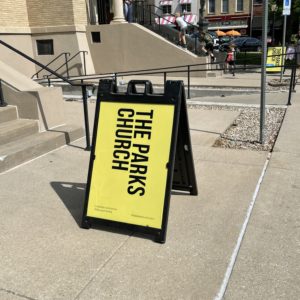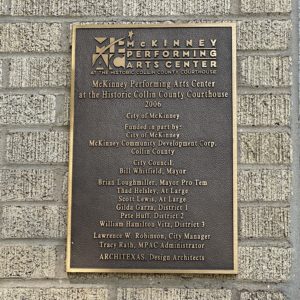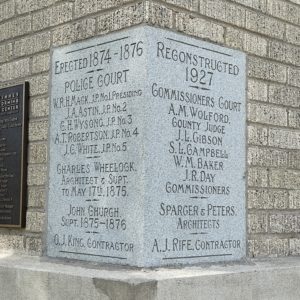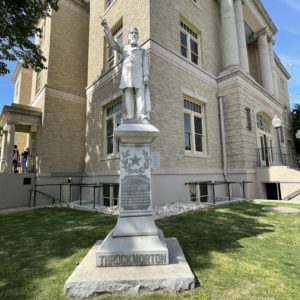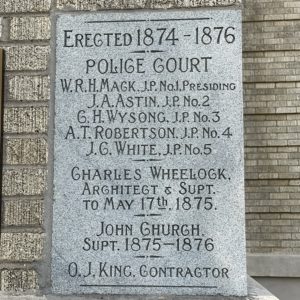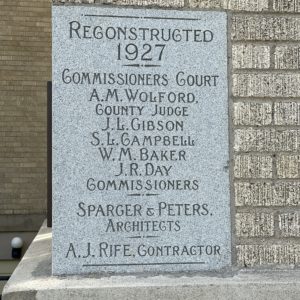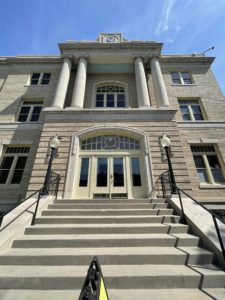Collin County Historic Courthouse (McKinney)
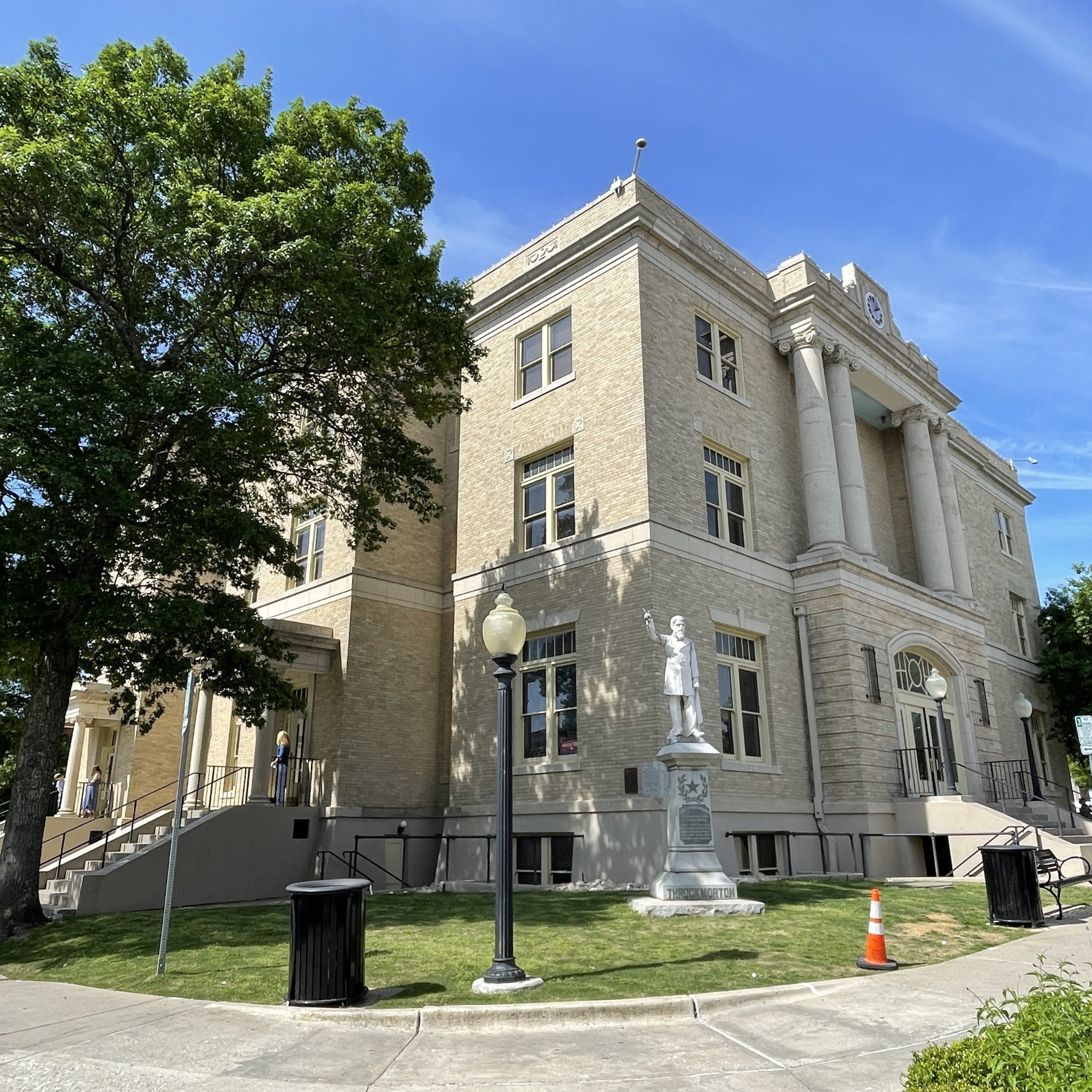
“The Temple of Justice”
Architect: Charles Wheelock.
Year Built: 1876. Major renovation in 1927.
The Old Collin County Courthouse, affectionately known as the “Temple of Justice” is located in downtown McKinney, Texas. It is presently used as a performing arts center and is rented to a church who conducts services there on Sunday.
From the Historical Marker:
Collin County was created from Fannin County in 1846. It was named for pioneer area settler Collin McKinney (1766-1861), a signer of the Texas Declaration of Independence. The first county seat was established at Buckner (2 mi. NW). In 1848 William and Margaret Davis conveyed 120 acres of land at this site for a more central seat of government, which became the community of McKinney. The first two courthouse in the new town were built of wood. In 1874 county commissioners approved plans for a more substantial courthouse on this site. Sherman architect Charles Wheeler designed the building and O.J. King served as general contractor. Constructed of stone from a local quarry (3.5 mi.ne), it was completed in 1876. A grand ball was held in the courthouse to celebrate the event. By the 1920s the courthouse was inadequate to meet the needs of a growing county. Extensive changes, including the addition of a basement and a third floor, were made in 1926-27 under the direction of architect W.A. Peters of Paris, Texas. The site of many political speeches and events, the building was used as a courthouse until 1979. It now serves as a historic reminder of the county’s early development.
A second Historical Marker readers as follows:
Collin County was formed in 1846 and its only town, Buckner, was automatically selected as the county seat. To comply with state law, an election was held to relocate the county seat to the center of the county. Only eleven people participated due to inclement weather, and when the vote was tallied McKinney was established as the county seat in 1848.
The first courthouses in McKinney were modest wooden structures. A third courthouse was erected on this site during 1874-1875, and was opened for use in 1876. The 2-story Victorian structure was made of native limestone blocks with a steep mansard roof and a main entrance that faced east. The building’s architect, often mistakenly identified as Charles Wheeler, was Charles Wheelock of Sherman. The much-celebrated courthouse on the square became a backdrop for parades and other events.
The structure was overcrowded and in poor condition by the mid-1920s. Extensive exterior and interior renovations included the removal of the mansard roof and tower caps, as well as the addition of a third story and basement. Overseen by W. A. Peters of the Paris, Texas, architectural firm of Sparger and Peters, the work resulted in a classical revival edifice completed in 1927. Original features included tripartite windows with flanking double classical columns on the north and south facades.
The new structure was commonly known as the “Temple of Justice,” and continued to be the center of activity for city and county functions. It remained in service as a courthouse until 1979. The structure remains a fine example of 20th century classical revival design and a monument to Collin County history.
From the Collin County History page:
The first Collin County courthouse was part of Jack McGarrah’s general store in Buckner. It opened in 1846 when Collin County was created. Records pertaining to the area during the days of the Republic of Texas are located in Bonham in the Fannin County courthouse. Before the Republic of Texas, records pertaining to area that became Collin County are recorded in the courthouse in the Red River County courthouse in Clarksville.
When the county seat was changed to McKinney in 1848, a log structure was built on the McKinney square. William Davis donated land from his survey for a town and for a public square for a courthouse.It was replaced in 1852 with a two-story, wood-frame structure. Before the Civil War, around 1861, this wooden courthouse was moved from the square in order to build larger, stone courthouse. Stone from the quarry at Squeezepenny was piled in the town square.
This building was remodeled in 1927 by adding a basement, and a third floor and removing the mansard roof and the tower caps. The new building was Neo-Classical in design. It was called “The Temple of Justice.” This building was abandoned in 1979.
In 1979 a new courthouse was built a couple of blocks southeast of the square. It was six stories high and modern in design. The architect was Jarvis Putty Jarvis, Inc. & Harvey G. Moore, Associate. This building was abandoned when a new courthouse was opened in 2008. It was demolished in 2011.

